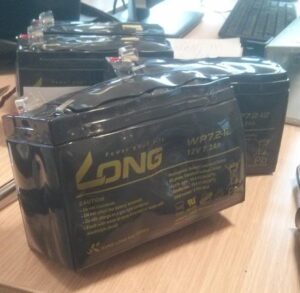Wondering what battery your car key needs? Look no further! We’ve got the solution for you. Your car key relies on a specific type of battery to keep it functioning smoothly. But with so many options available, finding the right battery can be a bit overwhelming. In this article, we’ll guide you through the process of determining exactly what battery your car key requires. So, let’s dive in and unravel the mystery of what battery does my car key need.
What Battery Does My Car Key Need?
If you’ve ever found yourself unable to unlock or start your car because of a dead key fob, you know how frustrating it can be. Car key fobs are designed to provide convenience and ease of use, but they rely on a battery to function properly. So, what battery does your car key need? In this article, we’ll explore the different types of batteries used in car keys and provide you with all the information you need to keep your key fob powered up and ready to go.
The Importance of a Fully Functional Car Key Battery
Having a fully functional car key battery is essential for the smooth operation of your key fob. A dead battery can leave you stranded and unable to access or start your vehicle. It is crucial to ensure that your car key battery is working correctly to avoid any inconvenience or potential safety risks. Let’s delve into the various factors that determine the type of battery your car key needs.
Finding the Right Battery for Your Car Key
There are several factors to consider when determining the type of battery your car key requires. Let’s take a look at some of the essential considerations:
1. Check Your Owner’s Manual
The first step in finding the right battery for your car key is to consult your vehicle’s owner’s manual. The manual will usually provide specific instructions on the type of battery your key fob requires. Look for a section that covers the key fob or remote entry system, as it should include details about the compatible battery type and size.
2. Identify the Battery Model
If you don’t have access to your owner’s manual or it doesn’t specify the battery type, you can identify the battery model by opening the key fob. Most car key fobs have a small compartment that can be opened using a small flathead screwdriver or a coin. Once you have access to the battery, take note of the model number or any identifying information printed on it.
3. Consider the Battery Type and Size
Car key fobs typically use one of two types of batteries: coin cell batteries or rechargeable batteries. Coin cell batteries are small, round batteries that are used in a wide range of electronic devices. They are readily available and easy to replace. Rechargeable batteries, on the other hand, can be charged using a USB cable or a docking station.
When it comes to the size of the battery, car key fobs often use common sizes such as CR2032, CR2025, or CR2016 for coin cell batteries. These sizes refer to the diameter and thickness of the battery. Make sure to double-check the size requirements to ensure a proper fit.
4. Pay Attention to Voltage Requirements
Another important consideration when choosing a battery for your car key is the voltage requirement. Car key fobs typically operate on low voltage, often around 3 volts. It is crucial to match the voltage requirement of your key fob with the battery you choose to ensure compatibility and optimal performance.
Replacing Your Car Key Battery
Once you have determined the type of battery your car key requires, it is time to replace the old battery with a new one. Here’s a step-by-step guide to help you replace your car key battery:
1. Gather the Necessary Tools
Before you begin, gather the necessary tools, including a small flathead screwdriver, a coin, or any other tool required to open the key fob.
2. Open the Key Fob
Locate the opening or compartment on your key fob and use the appropriate tool to open it. Be careful not to apply too much pressure to avoid damaging the key fob or the battery.
3. Remove the Old Battery
Carefully remove the old battery from its compartment. Pay attention to the orientation of the battery so that you can insert the new battery correctly.
4. Insert the New Battery
Take the new battery and insert it into the compartment, ensuring that it is properly aligned with the positive (+) and negative (-) terminals.
5. Close the Key Fob
Once the new battery is securely in place, close the key fob by aligning the two halves and applying gentle pressure until it snaps shut.
6. Test the Key Fob
After replacing the battery, test your key fob to ensure it is working correctly. Use the buttons to lock and unlock your car, and verify that the key fob is functioning as expected.
Extending the Lifespan of Your Car Key Battery
To make the most out of your car key battery and prolong its lifespan, consider the following tips:
1. Keep Spare Batteries
It’s always a good idea to keep spare batteries on hand in case your car key battery unexpectedly dies. This ensures that you can quickly replace the battery and get back on the road without any delays.
2. Avoid Excessive Heat
Protect your car key fob and its battery from excessive heat, as high temperatures can shorten the battery’s lifespan. Avoid leaving your keys in direct sunlight or in hot areas such as the dashboard of your car.
3. Minimize Button Presses
Excessive button presses can drain your car key battery faster. Minimize unnecessary button presses to help extend the battery’s life. This could mean manually unlocking your car if it’s within reach instead of using the key fob.
4. Check for Battery Leaks
Regularly inspect your car key fob for any signs of battery leaks, such as corrosion or a sticky residue. If you notice any leaks, immediately clean the affected area and replace the battery to prevent further damage.
Keeping your car key powered up with the right battery is essential for hassle-free access to your vehicle. By following the steps outlined in this article, you can determine the correct battery type and size for your car key and replace it when needed. Remember to consult your owner’s manual, identify the battery model, consider the type and size, and pay attention to voltage requirements. With a fully functional car key battery, you can confidently unlock and start your car without any worries.
Frequently Asked Questions
What type of battery does my car key require?
The specific type of battery required for your car key depends on the make and model of your vehicle. Most car keys typically use a small, round, flat battery known as a key fob battery. The exact battery specification can usually be found in your car’s owner’s manual or by contacting the manufacturer.
How can I determine the battery size for my car key?
To determine the battery size for your car key, you can perform a few simple steps. Start by accessing the battery compartment on your key fob. Next, carefully remove the old battery and check for any labeling or markings on it. Alternatively, you can refer to the owner’s manual or contact the car manufacturer for the battery size information.
Can I replace the car key battery myself?
Yes, in most cases, you can replace the car key battery yourself. The process usually involves opening the key fob, removing the old battery, and inserting a new one. However, it’s important to handle the small batteries with care and ensure they are properly installed to avoid any damage. If you’re unsure or uncomfortable with the process, it’s recommended to seek assistance from a professional or visit a local car dealership.
How often should I replace the battery in my car key?
The frequency of battery replacement for car keys can vary depending on factors such as the type of battery used, the number of times the key is used, and the key’s overall power consumption. On average, car key batteries may last between one to two years. However, it’s always a good idea to have spare batteries available, especially if you notice a decrease in the key’s performance.
What if the battery in my car key dies completely?
If the battery in your car key dies completely, the key may not function properly, or it may not work at all. In such cases, you can try replacing the battery with a fresh one. If the key still doesn’t work, it is recommended to consult the car manufacturer or a professional to further troubleshoot the issue and potentially obtain a replacement key.
Final Thoughts
In conclusion, determining the right battery for your car key is essential for smooth functioning. Most car keys use a small lithium battery, commonly a CR2032. It is crucial to consult your car’s manual or contact your car manufacturer to ensure the correct battery type. Regularly replacing the battery helps avoid key malfunctions and ensures reliable performance. Remember to have spare batteries on hand to avoid any inconvenience. So, when asking yourself, “What battery does my car key need?” be sure to consider the specific type and consult the proper sources to ensure the right fit.


